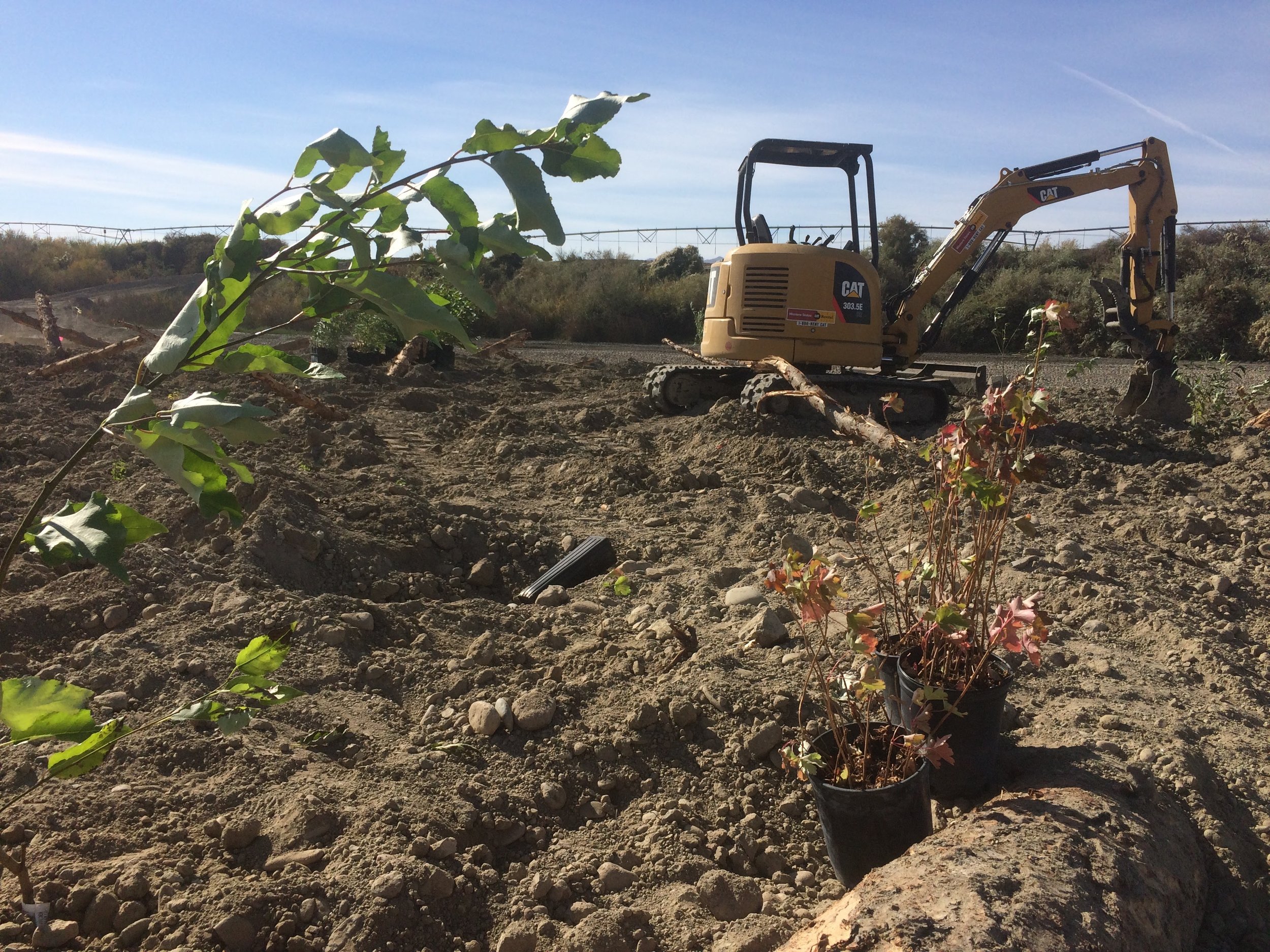IMA was contracted by The Freshwater Trust (TFT) to support design of an Idaho Power Corporation (IPC) pilot project at Bayha Island on the Snake River near Melba, ID. Working with TFT and an engineering firm, IPC restored fluvial and floodplain function by deepening an over widened channel and reconstructing the floodplain to address elevated river temperatures within this reach. Working in tandem with our sister company North Fork Native Plants we designed a comprehensive revegetation plan, custom grew plant materials, and completed plant installation at the 11ac. restoration site. We also designed, specified, and implemented a temporary irrigation system at the project. As the revegetation consultant, we specified the plant palette and installation techniques, provided comparisons and cost estimates for various revegetation options, specified the seedmix and seeding plan and designed the irrigation system. North Fork Native Plants custom grew about 10,000 containerized plants for the project. IMA provided creative, on-the-fly solutions to changing water levels and design discrepancies, and came up with irrigation solutions for a non-standard site. We are confident and hopeful that the currently installed plants will do well and we will be returning in the spring of 2017 to cut and install willow poles as part of an experiment comparing cuttings to pre-grown plants.
Bayha Island location on the Snake River and phased planting plan.
Plants ready to go in the ground with the mini-ex.
Before construction (June 2014).
After construction of floodplain and revegetation. Plants were watered in and irrigated for a few weeks after planting. (October 2016).
Nearby banks of bullrush and sedges were used as reference for planting wetland sod and bare roots at the edge of the islands (June 2014).
Our wetland sod is a highly successful product produced by Northfork Native Plants.
We used a UTV and trailer to haul plants from the staging area, which was on the mainland, across coffer dams to the island in areas impassable to regular vehicles.
Crews worked to plant around pre-installed floodplain roughness - logs keyed into the created floodplain for stability and microtopography.
Pressure from browsing animals, including deer, beavers, and voles, was deemed high on Bayha Island. To mitigate the damage, IMA installed three types of browse protection: beaver guards, deer fencing, and vole guards.
1) Beaver protection. Custom made beaver protection around vulnerable trees.
3) Deer fencing. Some upland areas were fenced with welded wire to prevent deer browsing. Other areas were left unfenced in an attempt to quantify the effect of fencing on plant survivorship.
2) Vole guards. Plastic vole guards were installed on smaller plants at risk from rodent browse pressure.
Planted areas were seeded before winter to prevent further soil erosion in spring floods.
Over 10,000 plants were installed on Bayha Island, Wright Island, and a small area of the adjacent mainland - we are looking forward to watching the floodplain fill in over the coming years!












